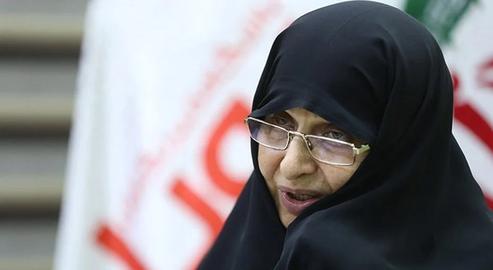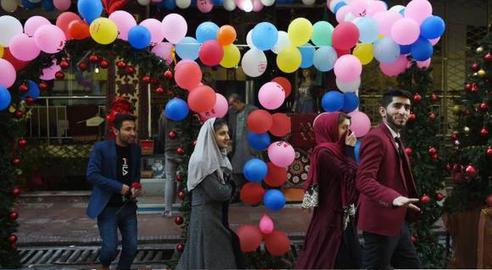She is two months pregnant, and terrified that someone might notice. Azam asked close friends and acquaintances to find someone to help her quietly abort her baby and "preserve her reputation”. She has gone without sleep and food to try to trigger a miscarriage.
Azam has been engaged to the son of one of her mother's relatives for about a year. But she fell pregnant by accident and is now desperate to hide this from her fiancé and her family. Her fiancé is a religious man and if he finds out his wife is pregnant, he won’t allow her to abort it. But at the same time, her own family is very traditional and won’t allow a pregnancy before the formal marriage. If they find out, they’ll force her to take the dowry she has prepared and go to her husband's home at once. She is not ready for this at all.
Azam is struggling with the physical and mental changes wreaked on her body by pregnancy. She is in dire need of a savior. A week after her petition, one of her friends introduced her to Mr. Saeedi.
Saeedi is a middle-aged man and a retired nurse. For several years now, with the help of a friend and through an intermediary, he has been smuggling abortion drugs into the country and in his own words, “solving the problem” of women who have become pregnant unintentionally. Where having children will make life more difficult, he is there to take this problem away.
Saeedi is well aware that his work is illegal. He is a and doesn’t say talk much when Azam finally catches him on the phone. He only tells her the cost will be around 800,000 tomans, and asks her to have an ultrasound first so that he can check her condition.
Two days later, Azam meets with Saeedi at her friend's house. Saeedi, now completely in the manner of a gynaecologist, examines the ultrasound. "Listen, madam, it doesn’t matter to me at all whether this pregnancy is legal or illegal. Given that the fetus is fortunately under three months old, it can be aborted with a pill."
He gives Azam two pills. One she is to put under her tongue; the other is a vaginal suppository. After she has taken both, he tells her: “In half an hour, you can take the next two pills the same way; then there will have been four, and you’ll take eight to complete the process. After the fourth or fifth pills, the bleeding should begin and the fetus should begin to fall. Until then, I will stay here to make sure of the result."
The whole process takes about two to three hours. Saeedi, who seems professional but is also taking care not to get into trouble, had not brought all eight pills with him. He leaves the house every half hour and brings two pills back with him. This way, he says, if anyone stops by, he can claim to be a nurse.
Now his mind is somewhat eased by seeing Azam and her friend in person, he starts talking about his intentions to help people. "I grew up in a religious family,” he tells her. “My grandfather was a mullah and the imam of the local mosque. I’m also a religious man. But when I saw men and women, who perhaps because of economic problems could not marry and start their lives together, or were too burdened by their previous children, or for whatever reason didn’t want to be pregnant, and seeing how they used to beg in the doctor’s office or contemplate taking bigger risks... I decided to come to their aid. And yes, I like the money as well."
He goes on to tell Azam and her friend: "I knew a girl who, after learning of her pregnancy and fearing for her reputation, had resorted several times to unscientific methods such as strange herbal infusions, hair removal powder and having someone jump on her stomach. This had no results and she was ready to commit suicide." But the pair had then met by chance, he says, and so he managed to save her from death and disgrace.
Three or four hours after the start of the process the bleeding has just begun. By observing the blood clots, Saeedi is sure that the fetus has come detached. So he takes his money and after giving Azam the necessary after-care advice, including resting at home for a few days, eating nutritious food and taking painkillers whenever she is in pain, he takes his leave.
The story of Azam's underground abortion by Mr. Saeedi is one of thousands that take place every day. In her case, the person who helped her abort had been a nurse for many years and had some medical training. But in many instances the process is much more dangerous, involving medication that may be out of date or medical implements that are not properly sanitized, and without the supervision of a professional. Because abortion in Iran is only legal for strictly medical reasons, at least 600,000 women are thought to undergo illegal abortions in Iran every year for reasons that may be much more complicated, personal and culturally-driven.
Maliheh is a woman in her 40s who inadvertently became fell pregnant with her third child. Her husband, a government employee, urged her to have an abortion because he could hardly support his family of four as it was, and he worries about the rent arrears every month. He obtained abortion pills through one of the chemists on Nasser Khosrow Street and made Maliheh take them.
After the first pill and in the first half hour, Maliheh had a headache and nausea. She ignored it at first and continued until the fourth pill. But then she vomited heavily and lost consciousness. When she woke up again, she was in hospital and the nurse told her she had been poisoned. Had she arrived at the clinic a little later, she was told, she could have died.
The economic, social, cultural and religious restrictions that weigh down on Iranian abortion law that in many cases contradict the present conditions of society. As a result, hundreds of thousands of women resort to unscientific and high-risk, non-medical methods when faced with an unwanted pregnancy and accept the risks. These can variously include septic shock, rupture of the uterus, damage to organs, severe bleeding, infertility, and especially where an unscientific abortion method is used in the first pregnancy, the risk of death.
Kobra Khazali, a member of the Cultural Council, has declared: “About 600,000 illegal abortions are performed annually in the country. This means that every day, 2,000 women undergo illegal and high-risk abortions, which represents the loss of about one-third of the country's total births." Some doctors and researchers say the true figure is likely to be much higher due to the difficulty of obtaining data on the subject.
The rate of abortions is a social phenomenon in Iran that, on the one hand, works against the desire expressed the country's officials, including the Supreme Leader, for Iranians to have more children and increase the population. But on the other, it speaks to the harsh economic realities many would-be parents are now facing, and the lingering presence of outdated social mores in a society now well into the 21st century.
This article was written by a citizen journalist in Tehran under a pseudonym.
visit the accountability section
In this section of Iran Wire, you can contact the officials and launch your campaign for various problems



























comments